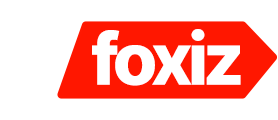Meta is advancing a bold initiative to build the world’s longest undersea fiber-optic cable, designed to link the United States, India, South Africa, Brazil, and other global regions. Dubbed Project Waterworth, this colossal infrastructure project will span an astonishing 50,000 km (31,000 miles)—longer than the circumference of the Earth. Meta envisions this as a cornerstone for enhancing AI-driven cloud services, expanding internet access, and strengthening digital economies worldwide.
What’s Happening & Why This Matters
Unparalleled Global Connectivity
The sheer scale of Project Waterworth makes it a game-changer in global internet infrastructure. Meta plans to integrate a 24 fibre-pair system, which is significantly more potent today than the standard 8 to 16 fibre-pair systems. This development will:
- Enable seamless AI-powered cloud computing, ensuring efficient data transfers between international data centers.
- Boost internet accessibility in regions like India, Africa, and South America, fostering economic and technological growth.
- Reduce latency and enhance broadband speed, creating a faster, more reliable internet experience for billions of users.
- Support businesses, startups, and AI innovators by improving the backbone of digital communications.
Challenges & Security Concerns
Undersea cables power 95% of global internet traffic, making their security and stability an international priority. However, these systems face multiple threats:
- Geopolitical conflicts – NATO has previously flagged vulnerabilities in undersea cables, citing instances of suspected sabotage.
- Environmental and accidental damage – The 2018 Tonga cable break disrupted the nation’s connectivity for days, showcasing the fragility of undersea internet lines.
- Cybersecurity risks – Governments remain wary of data sovereignty issues when tech corporations manage large-scale global internet infrastructure.

To mitigate these risks, Meta is implementing protective strategies, including:
- Laying cables at depths of up to 7,000 meters to limit exposure to shipping lanes and marine activity.
- Reinforcing fiber-optic cables with protective materials to reduce damage from deep-sea environmental pressures.
- Partnering with global telecom operators to ensure redundant and diverse routing paths, preventing large-scale outages.
Meta’s Expanding Influence on the Internet Backbone
Meta has actively invested in over 20 undersea cable projects, positioning itself as a dominant player in global internet infrastructure. While this expansion enhances network speeds and accessibility, it also raises concerns:
- Government scrutiny – Authorities fear Big Tech’s control over digital highways could impact national security.
- Censorship worries – With Meta controlling key data routes, some nations question the potential for biased content moderation.
- Data ownership disputes — The debate over who controls global data flows remains contentious, particularly in emerging markets.
TF Summary: What’s Next?
Meta’s Project Waterworth is poised to revolutionize global connectivity, enhance AI capabilities, improve digital infrastructure, and reduce broadband latency worldwide. However, its implementation raises critical concerns regarding security, surveillance, and corporate control over internet access. Governments and watchdogs will closely monitor how this project unfolds and whether it delivers fair and secure global networking solutions.
— Text-to-Speech (TTS) provided by gspeech.


